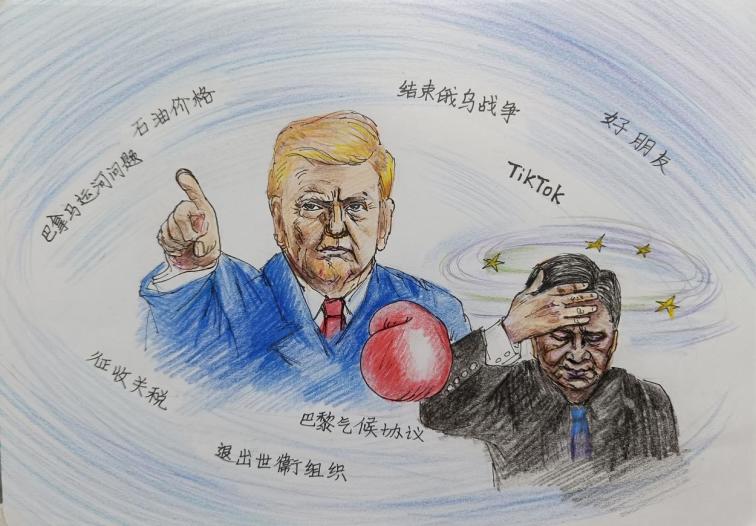Chikungunya fever is an acute infectious disease caused by the Chikungunya virus (CHIKV), transmitted through the bite of Aedes mosquitoes, commonly known as tiger mosquitoes. There is currently no specific cure or vaccine. (Internet image)
[People News] On July 15, the news that “478 confirmed cases of Chikungunya fever in Shunde District, Foshan” surged to the top of China’s Weibo hot search list, with over 1,123,654 searches as of now. According to Chinese media, the Shunde District Health Bureau in Foshan City, Guangdong Province, announced a local outbreak of Chikungunya fever on July 15. As of that day, the district had reported a total of 478 confirmed cases, with the most notable phrase in the report being “imported case.”According to reports, Chikungunya fever is an acute infectious disease caused by the Chikungunya virus (CHIKV), transmitted through the bite of Aedes mosquitoes, commonly known as tiger mosquitoes. There is currently no specific treatment or vaccine available.
According to the report, a local outbreak triggered by an imported case was detected in Shunde District on July 8. Through proactive case searches and testing, a total of 478 confirmed cases have been reported as of July 15. The cases are mainly concentrated in Lecun Town, Beijiao Town, and Chencun Town, and all are classified as mild cases.
On the same day, Shantou Centre for Disease Control also issued a statement advising that individuals returning from regions experiencing Chikungunya outbreaks (such as Shunde, Foshan) should monitor their health. If symptoms such as fever or joint pain occur, they must seek medical attention immediately and inform doctors about their recent travel history.
According to a post on the "Guangdong CDC" WeChat public account, more than 110 countries across Asia, Africa, Europe, and the Americas have reported cases of the Chikungunya virus. The post points out that the disease is rapidly spreading due to climate change and international travel. Mainland China's ports are at continuous risk of importation. Individuals experiencing symptoms such as intense joint pain in hands and feet, persistent high fever, or rashes should be alert to the possibility of Chikungunya infection.
Southern Metropolis Daily reported that Dr. Bai Honglian, head of the Infection Department at Foshan First People's Hospital, reminded the public that the current season, characterised by high temperatures and heavy rainfall, is a peak period for mosquito-borne diseases like dengue fever and Chikungunya fever. She called on citizens to strengthen awareness and take preventive measures.
An open literature search by Cover News revealed that this outbreak in Foshan’s Shunde District is the largest local outbreak of Chikungunya fever in China since 2010, in terms of confirmed cases.
A study involving the Chinese CDC, titled “Epidemiological Characteristics of Imported Chikungunya Cases in China (2010–2019)”, found that since 2005, the virus has caused multiple outbreaks across Africa, South Asia, Southeast Asia, and the Indian Ocean islands, with global incidence and mortality rates on the rise. In 2008, China detected its first imported case in a traveller returning from overseas. Between 2010 and 2019, mainland China (excluding Hong Kong, Macao, and Taiwan) reported 61 outbreaks, totaling 94 imported cases and 425 local cases, with no reported deaths.
Some netizens questioned the report: “It says all are mild cases, yet the government is making such a big deal out of it—there’s got to be more to the story.”
“Who are they fooling? All mild cases? What if people actually died, and they’re hiding it?”
“It’s worrying—no cure, no vaccine...”
What is Chikungunya Fever?
“Chikungunya” comes from the Kimakonde language and means “to become contorted,” describing how patients hunch over due to severe joint pain.
It is an acute infectious disease caused by the Chikungunya virus (CHIKV), transmitted by Aedes mosquitoes. The main symptoms are fever, rash, and joint pain. The disease was first confirmed in Tanzania in 1952, and the virus was isolated in 1956. It is mainly prevalent in Africa and Southeast Asia, and in recent years has caused large-scale outbreaks in the Indian Ocean region.
How is Chikungunya Transmitted?
CHIKV is primarily transmitted to humans through the bite of infected Aedes mosquitoes, especially Aedes aegypti and Aedes albopictus (the latter commonly known as the tiger mosquito). During outbreaks, humans become the main reservoir of the virus. When a mosquito bites an infected person, it can then transmit the virus to others, continuing the cycle of transmission.
What Are the Clinical Symptoms?
Typical features of Chikungunya fever (CHIKF) include: Sudden high fever; Severe joint pain (often symmetrical, affecting wrists, knees, ankles, and hands); Pain can persist for weeks or even longer; Muscle pain, especially in the lower back and legs; Tendinitis, tenosynovitis; Skin rashes; Joint swelling and tenderness are common.
One of the most serious complications is chronic arthritis. Chikungunya can also lead to eye complications, such as Scleritis, Optic neuritis, Retinitis (most common), Conjunctivitis, and Uveitis. These eye conditions are generally self-limiting.
How is It Treated?
There is no specific antiviral treatment or vaccine for Chikungunya. Treatment is symptomatic, including: Fever reduction, Pain relief, Adequate rest during the fever phase to prevent worsening of symptoms.
Where Is Chikungunya Prevalent?
Chikungunya fever typically peaks during the summer and autumn. In tropical regions, it can occur year-round. Countries and regions with significant outbreaks include: Africa: Tanzania, South Africa, Zimbabwe, Democratic Republic of Congo, Senegal, Angola, etc. Asia: India, Sri Lanka, Myanmar, Vietnam, Thailand, Laos, Cambodia, the Philippines, etc.










News magazine bootstrap themes!
I like this themes, fast loading and look profesional
Thank you Carlos!
You're welcome!
Please support me with give positive rating!
Yes Sure!